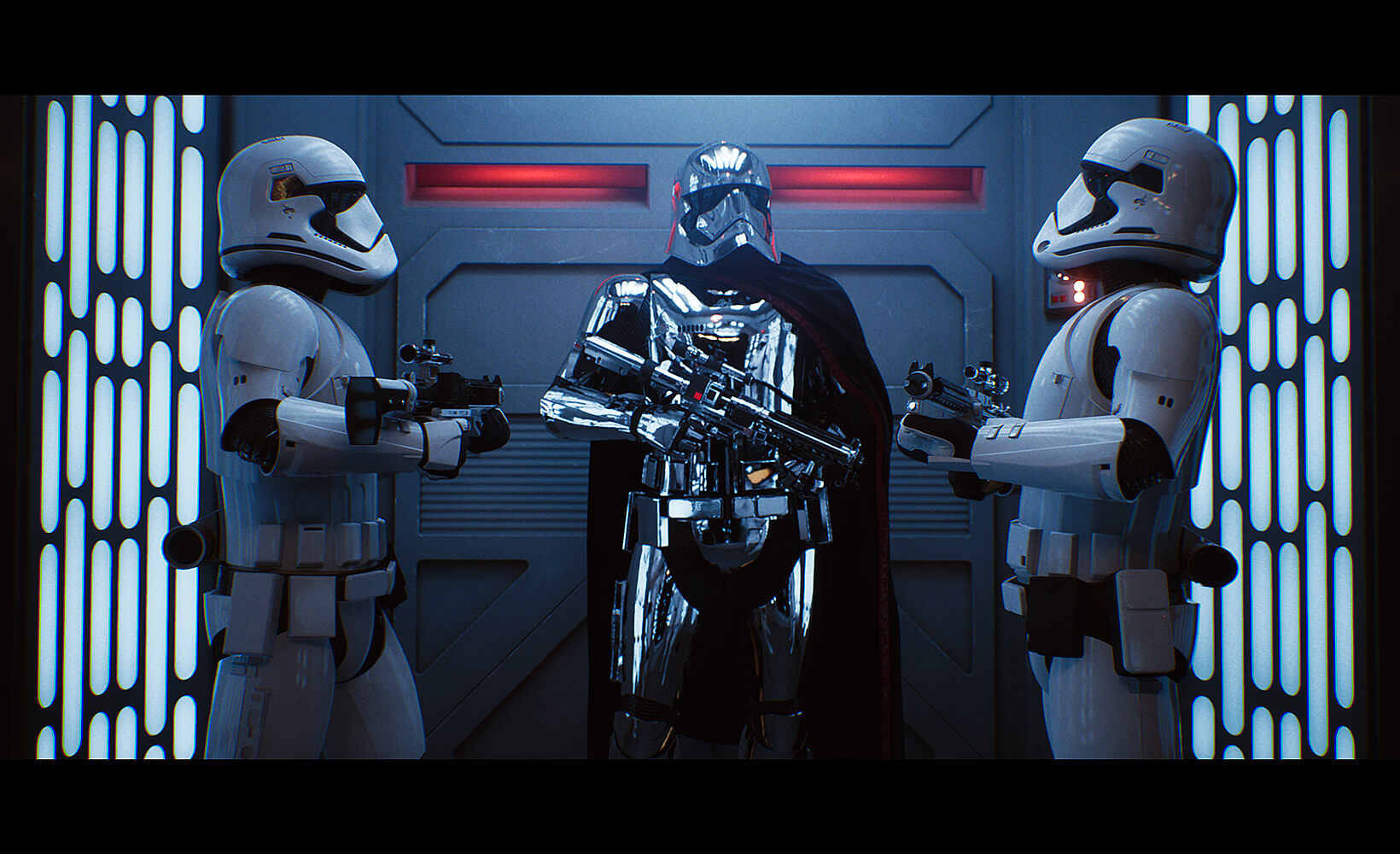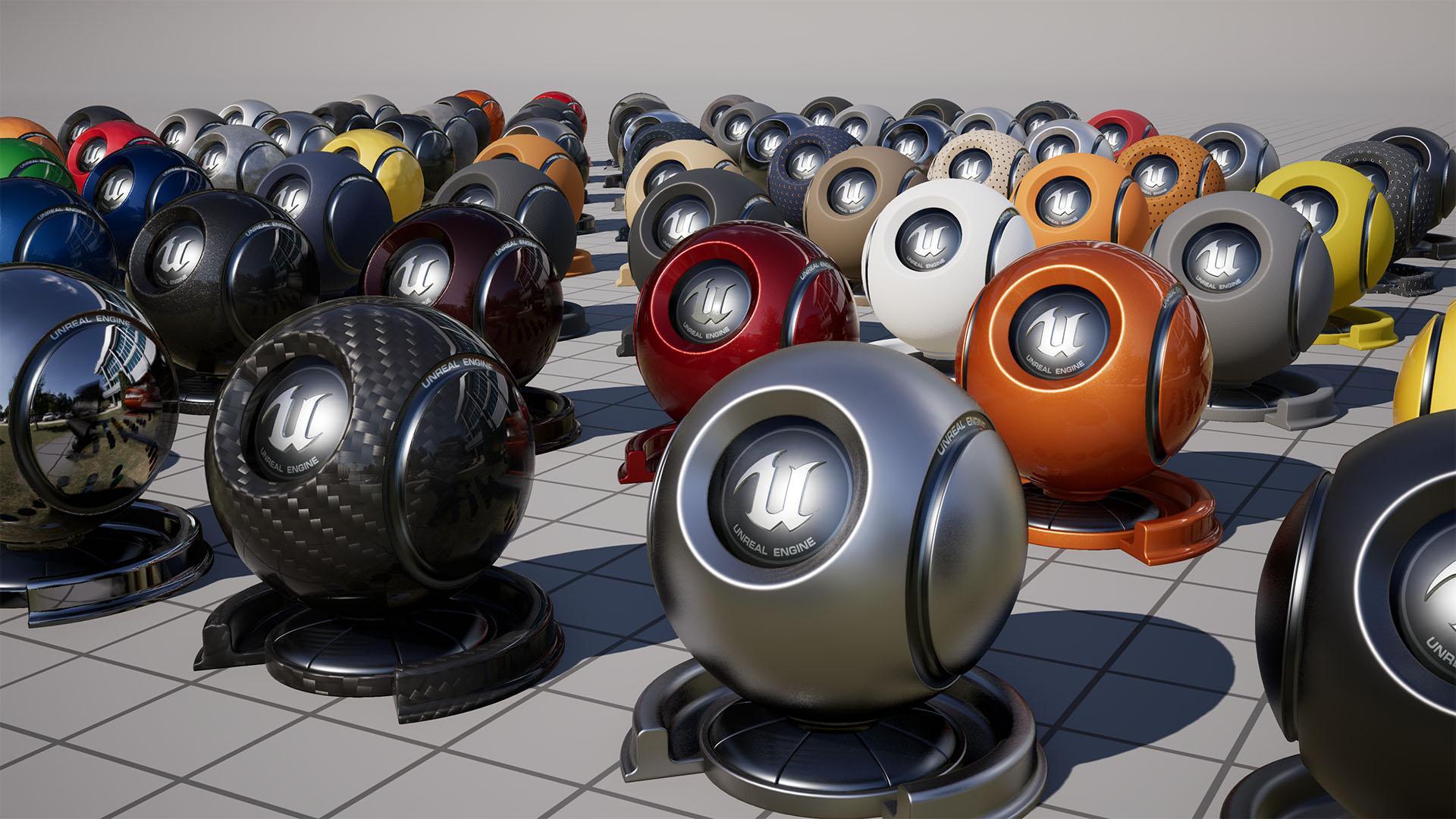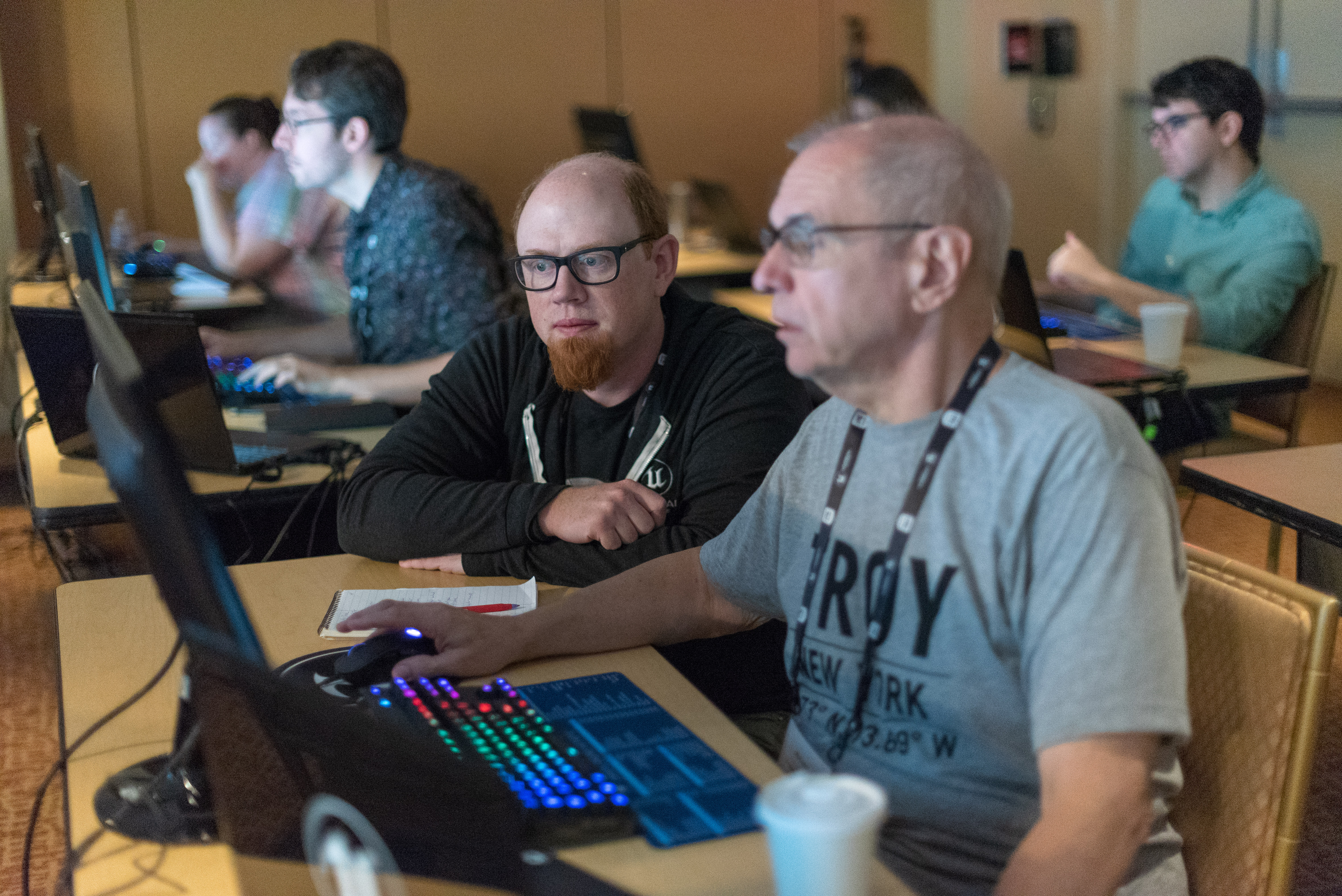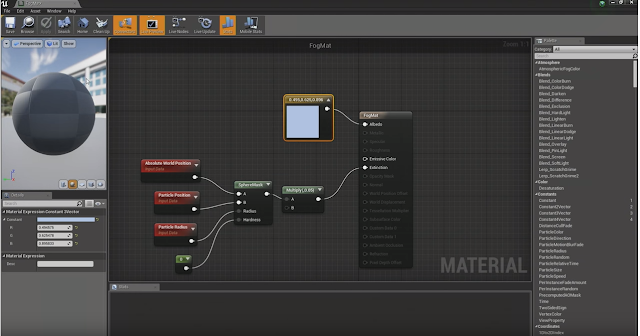A great post about the role of a technical artist. I have found myself coming back to this article a lot recently so have decided to repost it. I'm sure it will be useful in the future.
https://www.unrealengine.com/en-US/tech-blog/jobs-in-unreal-engine---technical-artist?utm_source=launcher&utm_medium=chromium&utm_term=showcase&utm_content=TechArt&utm_campaign=communitytab&fbclid=IwAR1n-Ri8pZS88G8SHionp3fWVHH9BbHX1BUjF_gpLyIJrupLQaCal66nJj4
Understanding the Role of a Tech Artist
Real-time technology is powering the world of interactive entertainment and transforming industries such as TV/film, architectural visualization, industrial design, and visual FX. It is now standard for game developers to create high quality games that render vast open worlds and for enterprise leaders to quickly deliver high-fidelity interactive experiences in real time. With the evolution and the complexity of real-time rendering across so many industries, it has never been so critical to bridge the gap between art and code to deliver exceptional results. This is where the technical artist comes in.
What is a technical artist?
A technical artist is a relatively new term in 3D development and real-time technology, but the demand for this particular role is growing quickly with a 48% increase in job postings in the last 12 months (Burning Glass, 2018). In game development, a technical artist, or tech artist for short, is the bridge between level designers and programmers working on a game. They are essentially the link between code and art. They ensure performance, consistency, and workflow. A proficient tech artist will allow a project to ship faster and at a higher level of quality.
Tech artists tend to be generalists while also having a strong focus in at least one area such as:
They often look at performance and profiling data with programmers, then brainstorm and implement content optimizations. Tech artists must be tools and technology experts, knowing the best routes to take and how to harness the tools being used most effectively. Tech artists fill in the gaps that studios may not even know exist, which is why every game studio needs a tech artist to ensure efficiency on all ends.

Volumetrics, Materials, Lighting
Why are they needed?
Prototyping
With more procedural content creation methods like Blueprints, Houdini and noise/shader based creation, tech artists are needed to test and prototype new graphics or content creation methods. They also aid with tool development when writing scripts in 3D rendering software such as 3ds Max, Maya, and Python. Prototyping can help other artists process assets for game use.
Tech artists work closely with engine/rendering programmers to share feedback on tools as well as prototype results. A tech artist can often make a fully functioning feature prototype in just days using Blueprints/shaders alone and demonstrate it to the team . The same feature may then take weeks to ‘officially’ rewrite in C++ into the engine in a general purpose way.

Custom FX implementation

Custom FX implementation
Optimization
A tech artist's optimization goal is to hit the target frame rate while having a net neutral (zero impact) or even positive impact on the graphical quality of a game. They help to ship games on various platforms, and work closely with artists when necessary to implement changes. A mix of art and technical skill combine to facilitate better engine and game development.
Typical tech artist optimization tasks include:

Where are they needed?
Games Industry
Advanced technology for games increases the demand for technical roles at game studios. Not only do gaming companies need more experienced level designers and programmers, they need someone to bridge the gap between art and code.
Tech artists ensure that programmers are programming, designers are designing, and artists are creating amazing art. This means everyone on the team is being utilized to their best potential. Real-time rendering also entails quick turnaround and a tech artist’s job is to prioritize and optimize game production. They can help quickly implement needed changes and prepare games to ship.


Tech artist jobs postings have seen a 48% growth rate in last 12 months - Burning Glass, 2018
Film Industry
Media and entertainment studios are increasingly turning to real-time technology to reinvent their pipelines. Real-time engines, like UE4, allow TV/film production teams to develop new workflows that drastically speed up processes, reduce hardware requirements, and promote creativity.
UE4 allows films to be shot, edited, and shipped, virtually eliminating post-production. A tech artist can keep these processes streamlined and running seamlessly. In addition to optimizing art and tech in the engine, TV/film studios also have a demand for technical specialist roles for positions such as shading technical director, lighting technical director, and pipelines technical director.


Reflections real-time ray tracing demo
Architecture Industry
When it comes to architectural visualization, it’s the tech artist's job to develop data pipelines and adapt existing pipelines to integrate new technologies or tools. In this vertical, tech artists often act as the primary programmer or developer for smaller teams that rely mostly on off-the-shelf features of the tools being used. They are usually tasked with learning new software, then training the team how to best use it for the studio's particular needs.

What types of skills do they require?
In order to be successful with tasks like optimization and profiling, here are some of the skills a technical artist needs:
A solid understanding of trigonometry and vector math
A foundation in at least one ‘traditional’ category such as level design, environment art, animation or coding
Experience writing in various scripting languages is hugely helpful: MAXScript, Python, MATLAB
For UE4: Blueprints, materials, level streaming
Understanding how computers work from a hardware to software level
They should understand how the various parts of a computer work together to render a scene, from loading the data from the hard drive to presenting it as an image to the player.

John Lindquist’s Pivot Painter 2 Max Script
What does the career path look like?
The best route to becoming a tech artist is to come from either an art or programming background. Most technical artists come from an art background and have specialized in a particular area such as architectural visualization, animation, lighting/shading, texturing, special FX, or character rigging. A technical artist can work in multiple industries including gaming, architecture, TV/film, industrial design, or the automotive industry.
“Usually tech artists have something tangible and 'techy' to show if they are hired directly into that role, or they slowly shift into the role after starting out in another content creator role, such as a level designer or environment artist. I personally started as a level designer and transitioned into tech art over the period of a few years, and a few others have followed a similar path.” - Ryan Brucks, principal tech artist, Epic Games.

Automotive-themed PBR Materials and Textures

Automotive-themed PBR Materials and Textures
How can they excel?
Always learning
A good tech artist loves to learn new things. It’s important for them to attend talks and events and network with professionals in their area of expertise. They should always make an effort to stay up to date with the latest technology as this makes them a valuable source of information within a company.
“You’ll never be bored being a tech artist. One day you might be writing a tool, the next you’re experimenting with new hardware, the next you’re developing the art guidelines for the studio’s next big project, the next you’re leading a training session for your peers. You’ll also have your pick of fields to work in and studios to work for, from automotive and aerospace to games, film, and TV; they all need great tech artists.” - Tom Shannon, technical artist, Education, Epic Games

Epic Games Technical Artist Tom Shannon at Unreal Academy EDU in New York City
Communication
Communication is key as a tech artist as it’s important to get in the habit of sharing lots of information. They potentially have to work with many different people on a variety of projects. It’s the tech artist’s job to ensure open communication channels by asking questions and providing feedback.
“Being able to communicate with different groups that may not often communicate, i.e., being a link between engineering and content teams is critical. This means staying engaged with what people are doing around you locally and in the industry as a whole. Even if you have a specific focus, it helps to be somewhat of a generalist so you can still be nimble as projects and opportunities shift.” - Ryan Brucks, principal tech artist, Epic Games

Epic Games Technical Artist Tom Shannon at Unreal Academy EDU in New York City
Would I be a good tech artist?
✔ I like tinkering with all the settings and checkboxes in my art software.
✔ I have thought about or have written scripts or tools to help automate boring or repetitive tasks (zero joy tasks).
✔ I enjoy problem-solving.
✔ I can talk to programmers, artists, producers, and designers alike and kind of want to do all their jobs!
✔ I enjoy learning how my favorite applications work from a technical perspective.
✔ I am the person on my team that is the "scripting", "rigging" or "materials" person.
✔ Whenever there's a technical issue on a project, I'm eager to help.
Interested in a career as tech artist or another role in real-time technology? Get started on your career today with Unreal Online Learning. These guided videos are free and on-demand so you can learn UE4 anywhere at any time!
https://www.unrealengine.com/en-US/tech-blog/jobs-in-unreal-engine---technical-artist?utm_source=launcher&utm_medium=chromium&utm_term=showcase&utm_content=TechArt&utm_campaign=communitytab&fbclid=IwAR1n-Ri8pZS88G8SHionp3fWVHH9BbHX1BUjF_gpLyIJrupLQaCal66nJj4
Understanding the Role of a Tech Artist
Real-time technology is powering the world of interactive entertainment and transforming industries such as TV/film, architectural visualization, industrial design, and visual FX. It is now standard for game developers to create high quality games that render vast open worlds and for enterprise leaders to quickly deliver high-fidelity interactive experiences in real time. With the evolution and the complexity of real-time rendering across so many industries, it has never been so critical to bridge the gap between art and code to deliver exceptional results. This is where the technical artist comes in.
What is a technical artist?
A technical artist is a relatively new term in 3D development and real-time technology, but the demand for this particular role is growing quickly with a 48% increase in job postings in the last 12 months (Burning Glass, 2018). In game development, a technical artist, or tech artist for short, is the bridge between level designers and programmers working on a game. They are essentially the link between code and art. They ensure performance, consistency, and workflow. A proficient tech artist will allow a project to ship faster and at a higher level of quality.
Tech artists tend to be generalists while also having a strong focus in at least one area such as:
- Shading
- Lighting
- Procedural creation
- Scripts/Pipeline work
- Optimization
- Visual Effects (FX)
They often look at performance and profiling data with programmers, then brainstorm and implement content optimizations. Tech artists must be tools and technology experts, knowing the best routes to take and how to harness the tools being used most effectively. Tech artists fill in the gaps that studios may not even know exist, which is why every game studio needs a tech artist to ensure efficiency on all ends.

Volumetrics, Materials, Lighting
Why are they needed?
Prototyping
With more procedural content creation methods like Blueprints, Houdini and noise/shader based creation, tech artists are needed to test and prototype new graphics or content creation methods. They also aid with tool development when writing scripts in 3D rendering software such as 3ds Max, Maya, and Python. Prototyping can help other artists process assets for game use.
Tech artists work closely with engine/rendering programmers to share feedback on tools as well as prototype results. A tech artist can often make a fully functioning feature prototype in just days using Blueprints/shaders alone and demonstrate it to the team . The same feature may then take weeks to ‘officially’ rewrite in C++ into the engine in a general purpose way.

Custom FX implementation

Custom FX implementation
Optimization
A tech artist's optimization goal is to hit the target frame rate while having a net neutral (zero impact) or even positive impact on the graphical quality of a game. They help to ship games on various platforms, and work closely with artists when necessary to implement changes. A mix of art and technical skill combine to facilitate better engine and game development.
Typical tech artist optimization tasks include:
- Developing content guidelines and workflows to ensure best practices
- Reducing scene complexity
- Analyzing content using profiling tools and/or spreadsheets to find ways to optimize memory/perf
- Adjusting project graphics settings
- Negotiating between art/code to find best compromises

Where are they needed?
Games Industry
Advanced technology for games increases the demand for technical roles at game studios. Not only do gaming companies need more experienced level designers and programmers, they need someone to bridge the gap between art and code.
Tech artists ensure that programmers are programming, designers are designing, and artists are creating amazing art. This means everyone on the team is being utilized to their best potential. Real-time rendering also entails quick turnaround and a tech artist’s job is to prioritize and optimize game production. They can help quickly implement needed changes and prepare games to ship.


Tech artist jobs postings have seen a 48% growth rate in last 12 months - Burning Glass, 2018
Film Industry
Media and entertainment studios are increasingly turning to real-time technology to reinvent their pipelines. Real-time engines, like UE4, allow TV/film production teams to develop new workflows that drastically speed up processes, reduce hardware requirements, and promote creativity.
UE4 allows films to be shot, edited, and shipped, virtually eliminating post-production. A tech artist can keep these processes streamlined and running seamlessly. In addition to optimizing art and tech in the engine, TV/film studios also have a demand for technical specialist roles for positions such as shading technical director, lighting technical director, and pipelines technical director.


Reflections real-time ray tracing demo
Architecture Industry
When it comes to architectural visualization, it’s the tech artist's job to develop data pipelines and adapt existing pipelines to integrate new technologies or tools. In this vertical, tech artists often act as the primary programmer or developer for smaller teams that rely mostly on off-the-shelf features of the tools being used. They are usually tasked with learning new software, then training the team how to best use it for the studio's particular needs.

What types of skills do they require?
In order to be successful with tasks like optimization and profiling, here are some of the skills a technical artist needs:
A solid understanding of trigonometry and vector math
A foundation in at least one ‘traditional’ category such as level design, environment art, animation or coding
Experience writing in various scripting languages is hugely helpful: MAXScript, Python, MATLAB
For UE4: Blueprints, materials, level streaming
Understanding how computers work from a hardware to software level
They should understand how the various parts of a computer work together to render a scene, from loading the data from the hard drive to presenting it as an image to the player.

John Lindquist’s Pivot Painter 2 Max Script
What does the career path look like?
The best route to becoming a tech artist is to come from either an art or programming background. Most technical artists come from an art background and have specialized in a particular area such as architectural visualization, animation, lighting/shading, texturing, special FX, or character rigging. A technical artist can work in multiple industries including gaming, architecture, TV/film, industrial design, or the automotive industry.
“Usually tech artists have something tangible and 'techy' to show if they are hired directly into that role, or they slowly shift into the role after starting out in another content creator role, such as a level designer or environment artist. I personally started as a level designer and transitioned into tech art over the period of a few years, and a few others have followed a similar path.” - Ryan Brucks, principal tech artist, Epic Games.

Automotive-themed PBR Materials and Textures

Automotive-themed PBR Materials and Textures
How can they excel?
Always learning
A good tech artist loves to learn new things. It’s important for them to attend talks and events and network with professionals in their area of expertise. They should always make an effort to stay up to date with the latest technology as this makes them a valuable source of information within a company.
“You’ll never be bored being a tech artist. One day you might be writing a tool, the next you’re experimenting with new hardware, the next you’re developing the art guidelines for the studio’s next big project, the next you’re leading a training session for your peers. You’ll also have your pick of fields to work in and studios to work for, from automotive and aerospace to games, film, and TV; they all need great tech artists.” - Tom Shannon, technical artist, Education, Epic Games

Epic Games Technical Artist Tom Shannon at Unreal Academy EDU in New York City
Communication
Communication is key as a tech artist as it’s important to get in the habit of sharing lots of information. They potentially have to work with many different people on a variety of projects. It’s the tech artist’s job to ensure open communication channels by asking questions and providing feedback.
“Being able to communicate with different groups that may not often communicate, i.e., being a link between engineering and content teams is critical. This means staying engaged with what people are doing around you locally and in the industry as a whole. Even if you have a specific focus, it helps to be somewhat of a generalist so you can still be nimble as projects and opportunities shift.” - Ryan Brucks, principal tech artist, Epic Games

Epic Games Technical Artist Tom Shannon at Unreal Academy EDU in New York City
Would I be a good tech artist?
✔ I like tinkering with all the settings and checkboxes in my art software.
✔ I have thought about or have written scripts or tools to help automate boring or repetitive tasks (zero joy tasks).
✔ I enjoy problem-solving.
✔ I can talk to programmers, artists, producers, and designers alike and kind of want to do all their jobs!
✔ I enjoy learning how my favorite applications work from a technical perspective.
✔ I am the person on my team that is the "scripting", "rigging" or "materials" person.
✔ Whenever there's a technical issue on a project, I'm eager to help.
Interested in a career as tech artist or another role in real-time technology? Get started on your career today with Unreal Online Learning. These guided videos are free and on-demand so you can learn UE4 anywhere at any time!


